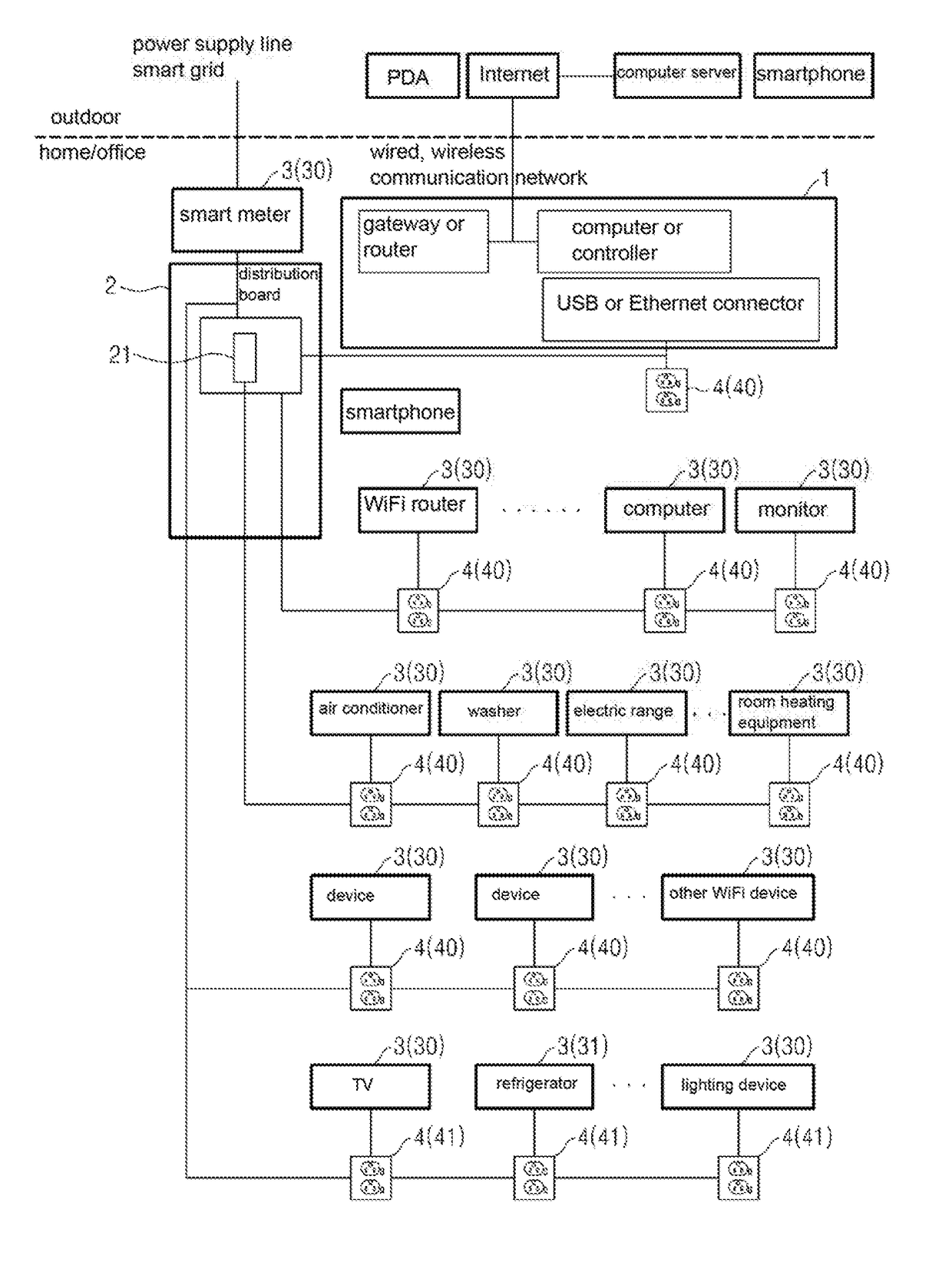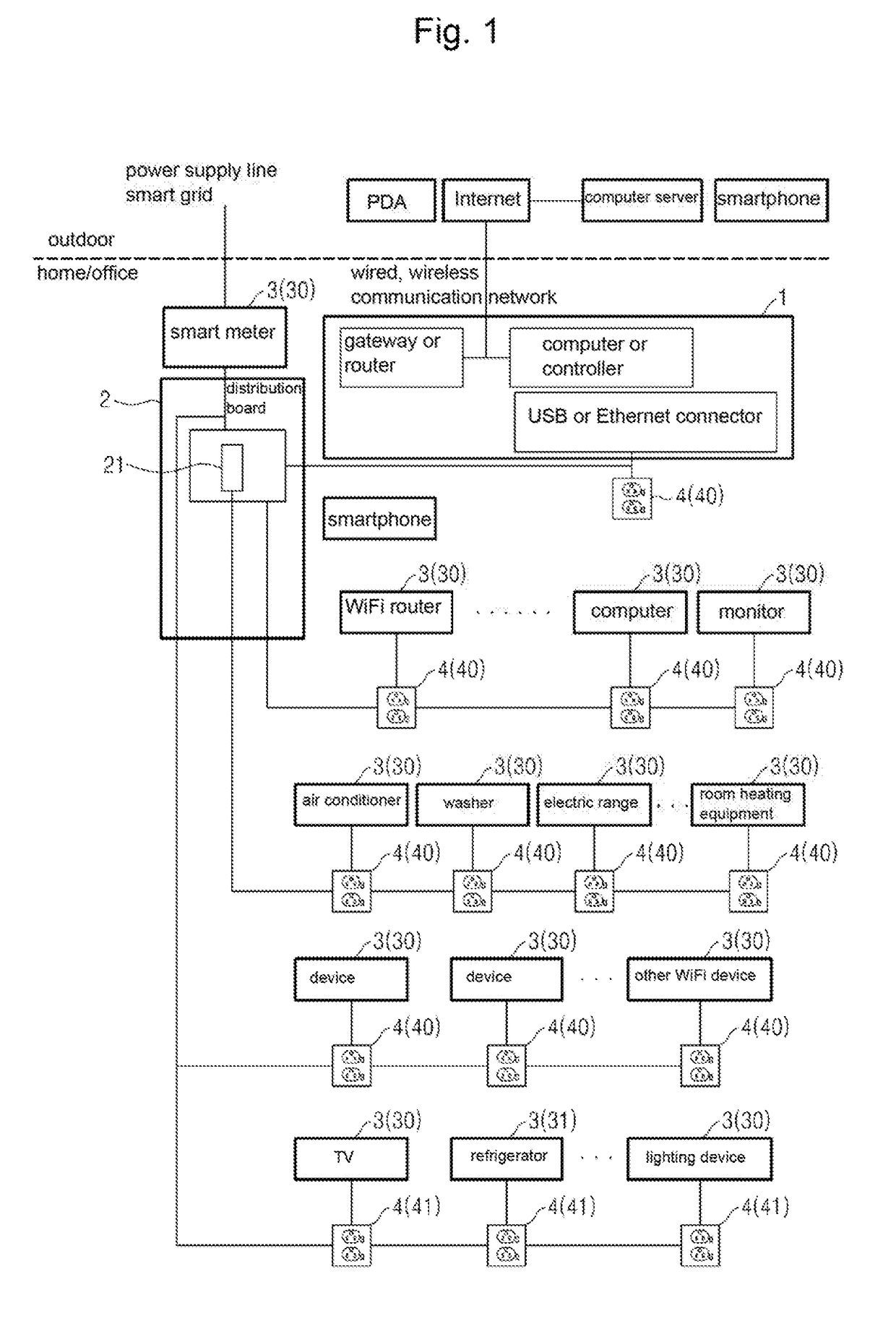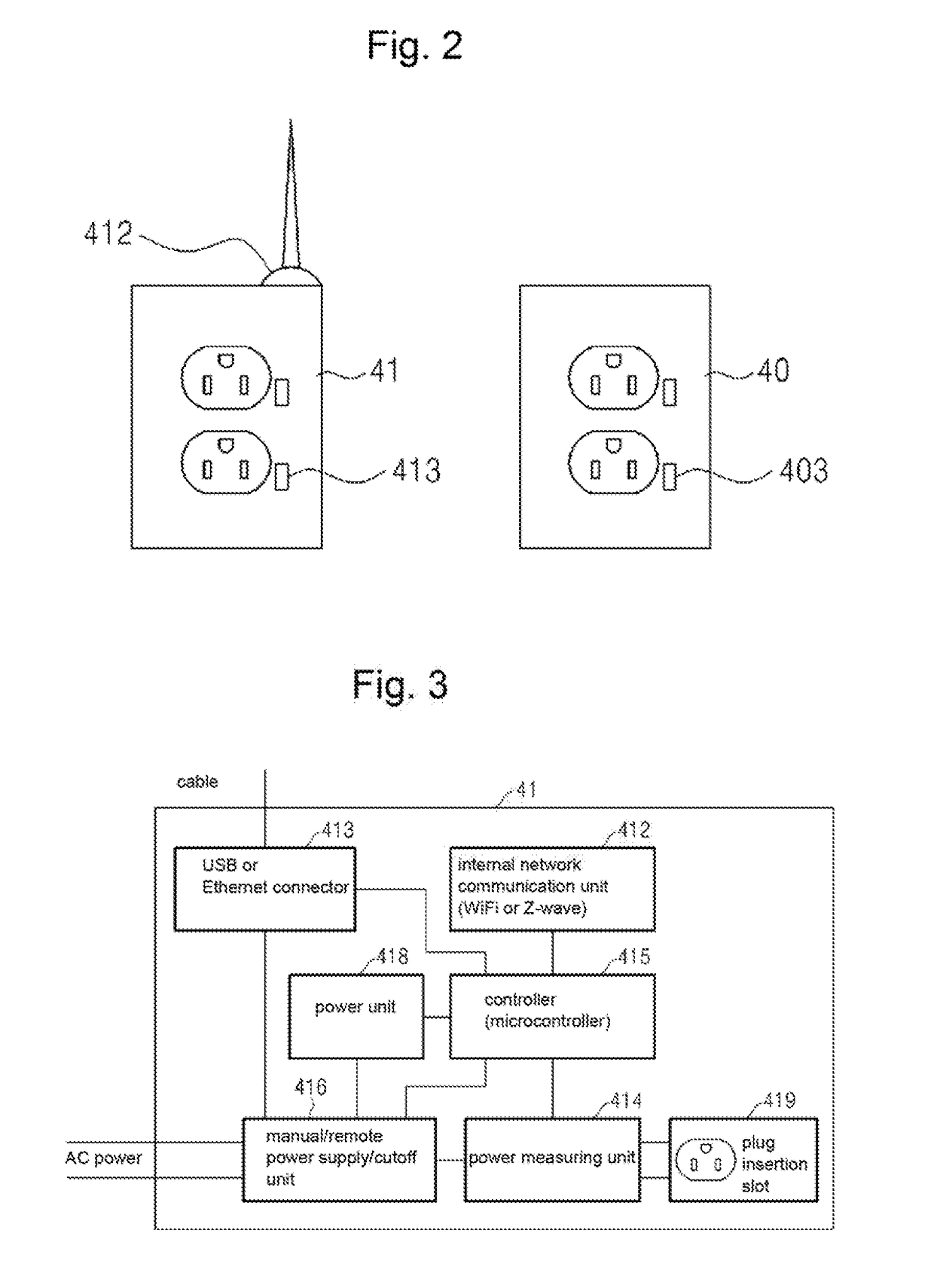Energy management system and control method therefor
- Summary
- Abstract
- Description
- Claims
- Application Information
AI Technical Summary
Benefits of technology
Problems solved by technology
Method used
Image
Examples
first embodiment
[0076]FIG. 1 is a block diagram illustrating a configuration of an energy management system according to the present invention. Referring to FIG. 1, the energy management system of the present invention is a wide area network for home or office, which includes a central management device 1 (applicable to, e.g., a smart meter, a wall pad, a separate dedicated device, a PC, a smart TV, or a smart refrigerator), at least one master device (at least one of reference numerals 3), and multiple slave devices (the remainder of the reference numerals 3 except for the master device(s))
[0077]The slave devices 3, as multiple home or office devices, such as a TV, a PC, a game console, an oven, a washer, a lamp, and a room cooler / heater, may be remotely controlled and may measure energy. The slave devices may wiredly or wirelessly communicate with the master device and may wiredly or wirelessly communicate with the outside, e.g., a portable device, such as a computer, a smart phone, or a tablet P...
second embodiment
[0131][Second embodiment] Meanwhile, the scheme in the configuration according to the first embodiment basically proposes that device IDs are basically set by the manufacturer upon manufacturing the devices to distinguish the devices from each other. The scheme, however, would take too long to be applicable to all the manufacturers and is thus expected to be difficult to put in widespread use.
[0132]The second embodiment of the present invention addresses such issue.
[0133]FIG. 10 is a block diagram illustrating a configuration of an energy management system according to a second embodiment of the present invention. Referring to FIG. 10, the energy management system of the present invention, similar to the configuration of FIG. 1, is a wide area network for home or office including a central management device 1-1 (the example of FIG. 10 represents the state of it having been applied to a smart meter), at least one master device (at least one of reference numerals 3), and multiple slav...
third embodiment
[0182][Third embodiment] Meanwhile, the configurations according to the first embodiment and the second embodiment of the present invention require separate wiring construction for existing receptacles, raising construction costs.
[0183]The third embodiment of the present invention addresses such issue.
[0184]FIG. 20 is a block diagram illustrating a configuration of an energy management system according to the third embodiment of the present invention. Referring to FIG. 20, the energy management system according to the third embodiment of the present invention, similar to the configuration of the second embodiment, includes a central management device 1-2, multiple devices 3, and receptacles 4.
[0185]At this time, according to the third embodiment of the present invention, some slave devices (e.g., at least some IoT devices) may have a manual / remote power supply / cutoff unit so that the power plug of the device can be inserted into an existing receptacle and the device can be supplied ...
PUM
 Login to View More
Login to View More Abstract
Description
Claims
Application Information
 Login to View More
Login to View More - R&D
- Intellectual Property
- Life Sciences
- Materials
- Tech Scout
- Unparalleled Data Quality
- Higher Quality Content
- 60% Fewer Hallucinations
Browse by: Latest US Patents, China's latest patents, Technical Efficacy Thesaurus, Application Domain, Technology Topic, Popular Technical Reports.
© 2025 PatSnap. All rights reserved.Legal|Privacy policy|Modern Slavery Act Transparency Statement|Sitemap|About US| Contact US: help@patsnap.com



